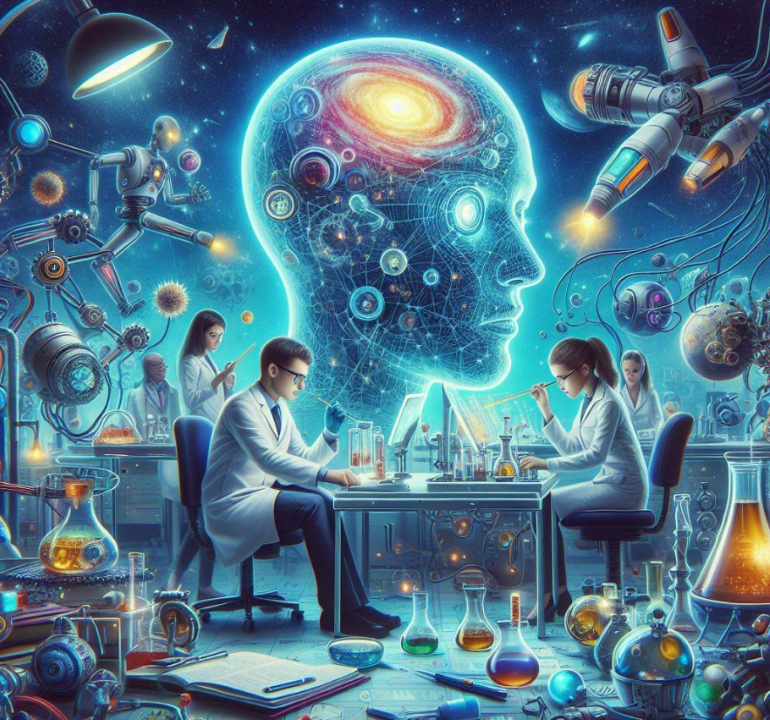TL;DR:
- Scientists are partnering with artificial intelligence (AI) to explore the origins of life.
- AI is helping decipher the complex processes that led to life’s emergence over 3.5 billion years ago.
- Machine learning is a crucial component of AI, aiding in solving the enigma of prebiotic evolution.
- AI is used to analyze vast data sets and uncover hidden connections in pre-life chemistry.
- Expert chemists like Leroy “Lee” Cronin highlight AI’s ability to bridge the gap between ancient chemical processes and modern understanding.
- AI is compared to the groundbreaking Miller experiment in synthesizing organic compounds.
- AI-driven analyses are advancing protein structure prediction and the understanding of protein evolutionary pathways.
- AI aids in navigating complex reaction networks and discovering new reactions central to life’s origins.
- Simulations that once took extensive computational time are now expedited by AI.
- Despite its potential, AI in this field is still in its early stages and relies on quality data.
- The collaboration between AI and origin-of-life researchers extends beyond history, exploring the potential for extraterrestrial life.
Main AI News:
In the relentless pursuit of unraveling the secrets behind the genesis of life, scientists are forging a groundbreaking alliance with artificial intelligence. The delicate equilibrium between chance and natural laws that paved the way for life’s emergence more than 3.5 billion years ago may now be within our grasp, thanks to the innovative prowess of AI technologies. Undaunted by the formidable complexities of early Earth, characterized by its tumultuous elemental forces and chemical abundance, researchers are wielding the power of intelligent tools to dissect hitherto impenetrable layers of prebiotic evolution.
Within the hallowed halls of laboratories resonating with the inquisitive spirit of visionaries like Wilhelm Huck from Radboud University, AI is taking center stage. Machine learning, the cornerstone of AI technology, is being harnessed to assemble the intricate puzzle of life’s enigmatic origins—an endeavor that challenges even the most astute scientific minds. These machines delve into vast troves of data, uncovering hidden threads in the labyrinthine world of pre-life chemistry.
Esteemed chemists such as Leroy “Lee” Cronin emphasize how AI acts as a bridge between ancient chemical processes and contemporary comprehension. It represents an investigative shortcut through time, transcending decades of laborious research. This innovative approach echoes the groundbreaking Miller experiment, which synthesized organic compounds from basic elements, shedding light on the potential formation of life’s building blocks.
Cronin’s colleagues are pushing the boundaries even further. AI-guided analyses in protein structure prediction and the reconstruction of protein evolutionary pathways, using cutting-edge tools like Google DeepMind’s AlphaFold and the groundbreaking work of Betül Kaçar, are pivotal steps toward deciphering the underlying code.
The enthusiasm is palpable—AI has even played a pivotal role in navigating the intricate web of reaction networks for synthetic chemist Bartosz Grzybowski’s team, unveiling novel reactions central to life’s inception. Additional investigations, such as Wilhelm Huck’s team’s predictions regarding the complex formose reaction, underscore the potential of machine learning to simulate and comprehend intricate chemical processes.
Simulations that once devoured countless hours of computational resources now reap the benefits of AI, with researchers like Timothée Devergne witnessing dramatic reductions in time and effort. Nevertheless, despite its remarkable capabilities, AI in this domain is still in its formative stages, and experts like Valentina Erastova advocate caution, recognizing the technology’s reliance on extensive, high-quality data.
The collaboration between AI and origin-of-life researchers transcends mere historical exploration; it is a voyage that spans cosmic realms, delving into the possibility of life beyond Earth’s boundaries. By harnessing the potential of AI, humanity inches closer to unveiling the initial whispers of life, potentially illuminating not only the epic tale of how Earth teemed with vitality but also the tantalizing prospect of a universe brimming with lifeforms.
Conclusion:
The integration of artificial intelligence in the quest to unravel the origins of life represents a significant leap in scientific understanding. AI’s ability to analyze vast datasets, accelerate simulations, and bridge the gap between ancient chemistry and modern science holds immense promise. This technological partnership not only advances our understanding of Earth’s history but also raises exciting prospects for the search for life beyond our planet. In the business world, this could lead to increased investment in AI-driven scientific research and technology development, creating new opportunities for companies in the AI and biotechnology sectors.

